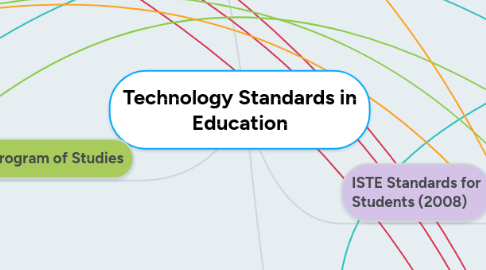
1. Learning and Technology Policy Framework
1.1. Policy Direction 1: Student-Centered Learning
1.1.1. Students are able to use technology to communicate, retrieve information, gain knowledge, and achieve creative problem solving. Students learn how to use modern technology in order to become active and responsible digital citizens.
1.2. Policy Direction 2: Research and Innovation
1.2.1. Schools and teachers participate in acquiring and participating in new research and monitor the effectiveness of different technologies in their classrooms.
1.3. Policy Direction 3: Professional Learning
1.3.1. Teachers keep up-to-date with new educational technology so that they can use it to create individualized meaningful lessons. They have a good understanding of new technology and how it can be used to enhance their classroom environment.
1.4. Policy Direction 4: Leadership
1.4.1. Technology plans are kept up-to-date and inform administration how technology can be used in the school in a effective, innovative and cost effective way.
2. ICT Program of Studies
2.1. Communicating, Inquiring, Decision Making, and Problem Solving
2.1.1. Students use technology as a tool to research and aid in inquiry. They use it to communicate, gain alternate perspectives and critically analyse information.
2.2. Foundational Operations, Knowledge, and Concepts
2.2.1. Students know how to use technology and have an understanding of how it relates to their learning and can be used in school. They also understand ethics associated with online use as well as safety and privacy concerns.
2.3. Processes for Productivity
2.3.1. Students know how to use a variety of digital tools and how to apply them to their studies.
2.4. ICT is integrated in the core curriculum
2.4.1. Teachers use technology in an intrinsic way "infusing" it into all of their lesson plans as a way to enhance student's learning.
2.5. Assessment Framework
2.5.1. Teachers and educators are responsible to assess the effectiveness and student success with ICT in classes based on the Classroom Assessment Toolkit.
3. ISTE Standards for Teachers (2008)
3.1. Facilitate and Inspire Student Learning and Creativity
3.1.1. Teachers model how digital spaces can be used for learning and demonstrate how to use a variety of digital tools to solve real-world problems. They engage students in innovative and creative thinking within digital spaces.
3.2. Design and Develop Digital Age Learning Experiences and Assessments
3.2.1. Teachers use a wide variety of digital tools and platforms in a meaningful way to facilitate creative and individualized learning in the classroom. They design and modify activities based on the needs of their students
3.3. Model Digital Age Work and Learning
3.3.1. Teachers are able to model digital use and provide knowledge on recent technologies. They are able to effectively communicate with the classroom and school community using digital platforms.
3.4. Promote and Model Digital Citizenship
3.4.1. Teachers model responsible, ethical and legal use of social media platforms. They are able to give equal opportunities to students and demonstrate global awareness through media use.
3.5. Engage in Professional Growth and Leadership
3.5.1. Teachers continue to learn about and use new learning technologies in their classroom. They participate in their professional community by providing research and knowledge to colleagues and other professionals.
4. ISTE Standards for Students (2008)
4.1. Digital Citizen
4.1.1. Students have a sense of digital responsibility and present themselves online thoughtfully, ethically and legally. They understand privacy and online security.
4.2. Innovative Desgner
4.2.1. Students become designers, innovators, and engineers by using a variety of digital design tools. They learn how to approach open ended questions imaginatively.
4.3. Knowledge Constructor
4.3.1. Students are able to find information online and are able to identify useful, reliable sources. They can build and demonstrate knowledge thoughtfully by finding meaningful connections between different sources.
4.4. Creative Communicator
4.4.1. Students are able to use a variety of digital platforms to creatively express themselves and communicate with others.
4.5. Global Collaborator
4.5.1. Students are able to use digital tools to access and collaborate with the greater global community. They gain a perspective on global and local issues through such collaborations.
